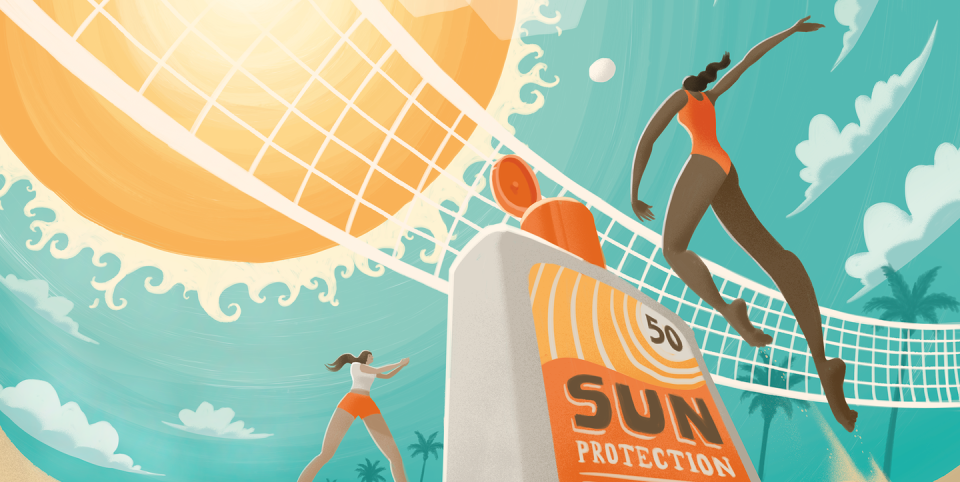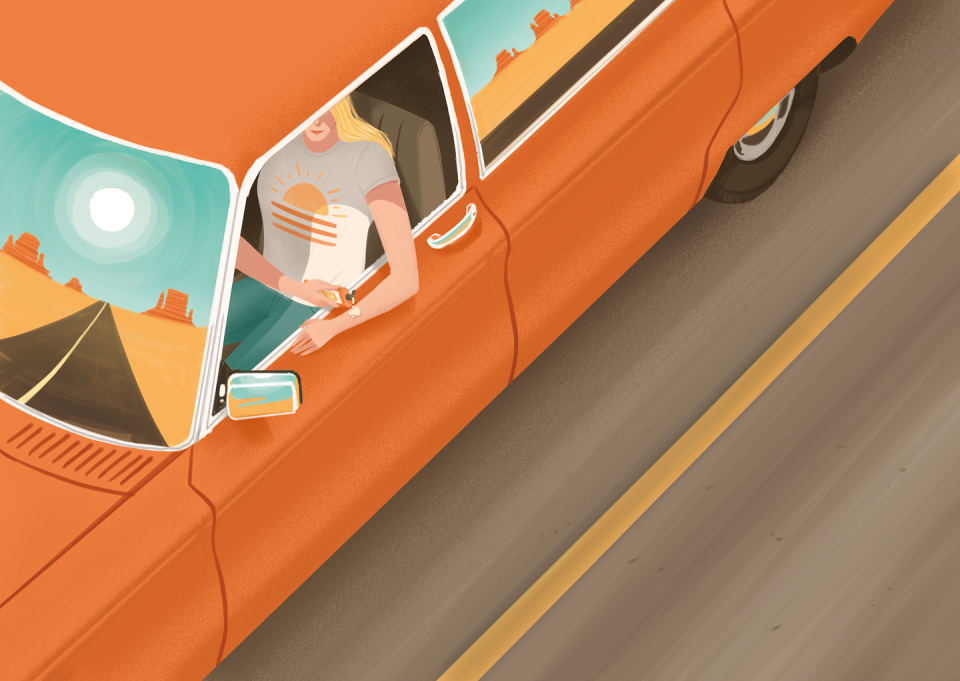5 Dangerous Sunscreen Myths You Should Stop Believing This Summer

When the weather gets warm and the layers come off, you know that it’s time for head-to-toe sunscreen. However, a recent survey of 1,000 U.S. adults by the American Academy of Dermatology found that, while 80% of respondents knew they should slather on the SPF every two hours, only 33% of people reported doing so. What’s more, 42% avoided reapplying sunscreen at all or reapplied it only when their skin got wet.
But that’s a big mistake. If you’re not covering up with UPF protective clothing, sunscreen is a must to reduce your odds of potentially deadly skin cancer, as well as sun damage that leads to signs of aging (regardless of your skin tone).
We get it: Sunscreen can be a bit confusing. What do all those numbers on the bottle even mean? Why do we have to reapply it at all? And when do you really need it? Below, experts explain the most common sunscreen myths, followed by the real deal.
Myth: The higher the SPF, the longer you can go before reapplying.
Whether you use SPF 30 or SPF 100, you need to reapply it at least every two hours. That’s because SPF refers to how much of the sun’s rays the sunscreen filters, not how long it lasts. The reason sunscreen lasts only two hours, says Paul Nghiem, M.D., Ph.D., head of the dermatology division at the University of Washington School of Medicine, is that sun and moisture break down or wash off some of the protective chemicals.
Set a phone reminder to reapply it, and use more than you think you should. “On average, people apply only about one-third as much sunscreen as the government assumes when it calculates the SPF,” Dr. Nghiem says. If you skimp, that SPF 30 might be giving you only SPF 10 protection. For whole-body coverage, you need enough to fill a shot glass, and if you’re not great about slathering it on, go for an SPF of 50 or higher.
Myth: Car windows block the sun.
Car windshields are typically made of laminated glass, which blocks UVB and UVA rays, but side and rear windows usually aren’t. That means these only block UVB rays—not UVA rays, which go deeper into the skin.
In a study in the Journal of the American Academy of Dermatology, researchers found that people who did the driving were more likely to wind up with skin cancer on the left side (the sun-exposed driving side) of their face and body. In fact, 74% of patients with malignant melanoma had tumors on the left side, compared with 26% on the right.
Fortunately, the solution is simple. If you’re going to be in the car for more than a few minutes, wear sunscreen or protective clothing like a long-sleeved shirt, Dr. Nghiem says, as well as shades—sunglasses with UVA- and UVB-protective coatings cut down on glare and help protect you from cataracts.

Myth: Sunscreen will decrease your vitamin D levels.
The small amount of UVB rays that gets through sunscreen is enough to help your body manufacture vitamin D, says Antony Young, Ph.D., a professor emeritus of experimental photobiology at St. John’s Institute of Dermatology in London. This “sunshine vitamin” is crucial for bone health and plays a role in everything from immune function to muscle function.
But you can also up your levels through diet, says Steven Daveluy, M.D., FAAD, a dermatologist at the Karmanos Cancer Institute in Detroit. Vitamin D heavy hitters include rainbow trout, salmon, canned tuna, eggs, and D-fortified cereal, orange juice, soy milk, oat milk, and cow’s milk. If you’re deficient, your doctor may also recommend a daily vitamin D supplement (600 IU to 800 IU is typically a sound starting point).
Myth: You can make your own sunscreen at home.
Bad idea, says Young. “Commercial sunscreen is very highly regulated for safety, efficacy, and formulation quality. There’s no way of assessing those factors with homemade formulas,” he says. You wouldn’t be able to test the SPF level of a homemade batch, and effective ingredients are neither easily purchased by consumers nor easy to mix.
Still, if you’re worried about particular ingredients that soak into skin, look for a physical (a.k.a. mineral) sunscreen containing zinc oxide or titanium dioxide, which will “sit on your skin and deflect the sun’s rays,” says Dr. Daveluy. “Because it’s not absorbed into your skin, you don’t have to worry about its doing anything—except saving you from skin cancer.”
Myth: Sunscreen is more important for kids than for adults.
It’s true that childhood sunburn is a risk factor for adult skin cancer, in particular melanoma, but ongoing sun exposure is just as hazardous when you’re older. “We have proof that every sun exposure increases the risk of skin cancer,” says Dr. Daveluy.
Considering that most people get just 25% of their lifetime UV exposure by age 20, there’s plenty of time to avoid more damage. Every adult should be covered in sunscreen when they’re in the sun, but it’s especially important if you used little or no sunscreen when you were a kid. Choose a sunscreen that is broad-spectrum, which means it blocks both UVB rays (the ones that burn skin) and UVA rays (the ones that age skin). Both types can cause skin cancer.
This article originally appeared in the July 2021 issue of Prevention.
You Might Also Like

 Yahoo Sport
Yahoo Sport 





































